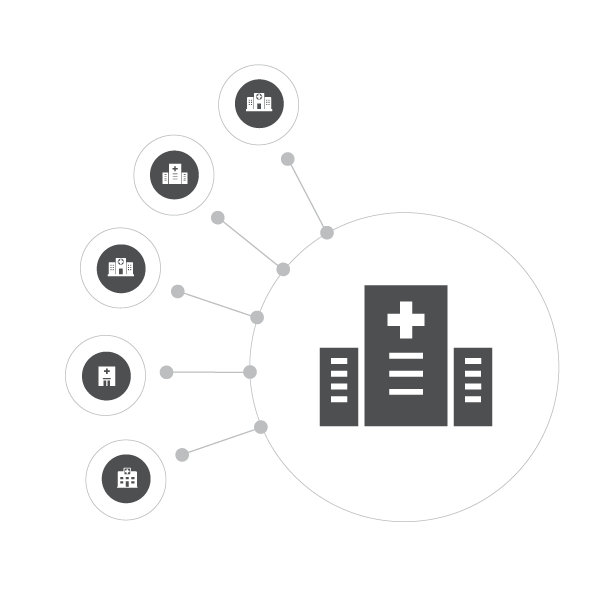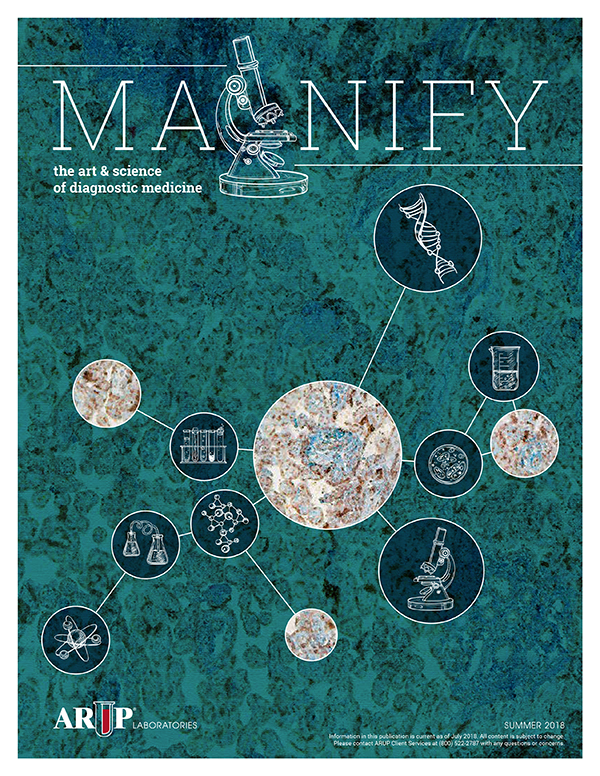ARUP Healthcare Advisory Services Helps Growing Health Systems Integrate and Optimize Laboratory Services
Expanding a health system is often a complex and messy process. A growing system may build new hospitals and acquire others, all while renovating older facilities and shifting departments around to keep pace with evolving needs. For laboratories, the result can be a hodgepodge of test menus, interfaces, workflows, and supply chains that are patched together well enough to work, but not to work well.
In the postpandemic landscape, health systems are pursuing growth more aggressively, which has led to an upswing in requests for ARUP Healthcare Advisory Services to partner in system laboratory alignment projects. In 2024, the volume of mergers and acquisitions (M&A) activity was 70% higher than the pre-COVID-19 trendline, according to PwC, a global accounting and professional services firm.
“The idea behind most mergers or acquisitions is that the whole will be greater than the sum of its parts. You’re not achieving that if you don’t integrate operations. You’re just acquiring pieces that don’t work together any better than they did before you brought them on,” said David Shiembob, MBA, C(ASCP)CM, manager, ARUP Healthcare Advisory Services.
The goal of system laboratory alignment efforts is to integrate laboratory services across the entire health system to improve efficiency, save money, and support patient care. “Essentially, we’re looking to optimize the delivery of lab services across the enterprise,” said Sandy Richman, MBA, C(ASCP), vice president, ARUP Healthcare Advisory Services.
Health Systems Are Under Pressure
M&A activity is just one reason health systems are seeking stronger laboratory alignment. Another is the tremendous pressure they are under to reduce costs. Shiembob described four factors that are contributing to increased laboratory expenses: inflation in labor and supply costs, the aggressive growth plans of systems that are attempting to get back on track after the COVID-19 pandemic, the escalating expense of new specialty testing, and the continued incorporation of physician groups into health systems, which increases demand for system laboratory services.
In the face of that financial pressure, system laboratory alignment can help achieve cost savings by pinpointing areas for consolidation, eliminating redundancies, and optimizing resources such as laboratory space, equipment, and staffing.
“A unique approach Healthcare Advisory Services takes is not just focusing on saving the most money but on delivering the best patient care, as well,” Richman said. “Centralizing some tests would reduce the lab budget, for example, but if key treatment decisions are being made based on those test results, you could save a little money in the lab but lose more money in delayed diagnoses and treatments or worse patient outcomes.”
“A unique approach Healthcare Advisory Services takes is not just focusing on saving the most money but on delivering the best patient care, as well.”
Sandy Richman, MBA, C(ASCP) Vice President, ARUP Healthcare Advisory Services

The Problems of Misalignment
Poor system laboratory alignment can cause a host of operational challenges for an organization. “As health systems get larger, they’re not always doing things in the most efficient way. Different hospitals may have separate reference laboratories. They may have duplicate testing that doesn’t need to be done at multiple sites. They’re on different lab information and electronic medical records systems,” Richman said.
Additionally, the system may have incompatible or redundant laboratory equipment, and sites may be relying on different vendors. Due to poor interfacing between laboratories, the system may be losing revenue to test leakage—outsourcing tests to reference or boutique labs when those tests could be performed internally instead.
All these inefficiencies are costly for the health system, but they also affect clinicians and their patients. For example, physicians practicing at multiple facilities may encounter entirely different test ordering and resulting processes at each location. Patients who travel between different system facilities are similarly affected. “They could have their records in different systems; they could have different testing performed depending on where they go—different manufacturers, different reference ranges—so it can be difficult for a physician to see all the testing that’s been done on the patient and compare those results,” Shiembob said.
Patients may have very different experiences based on which system facility they visit. Billing processes may differ from one location to another, and test results might be delivered through varying platforms or formats. “That’s a dissatisfier,” Shiembob said.
Benefits of Alignment
A well-aligned system is fine-tuned to operate efficiently. Each lab has a distinct role in the system, with thoughtfully curated test menus. “You’re making holistic decisions about which testing should be performed at each lab so you can benefit from economies of scale while also providing rapid results to enable clinical decision-making,” Shiembob said. Additionally, workflows and communications are streamlined between labs and with clinicians.
These efficiencies can translate into significant cost savings for the system. When labs are well aligned, each lab makes the most of its space, staffing, and instrumentation, which reduces redundancy and eliminates waste. Standardizing technology across all labs streamlines vendor management, enables bulk purchasing, and supports consistent reporting and test reference ranges.
Alignment also creates the opportunity to establish centers of excellence that specialize in complex or rare types of testing. “A benefit of building up those centers of excellence is that they will attract talent to your organization—experts in the field,” Richman said.
Most importantly, alignment can help improve patient outcomes. “If you have well-integrated system laboratories, patient results are consistent and transparent, providers have easy access to those results, and your turnaround times for routine testing should be top-notch,” Shiembob said. “You’re prioritizing getting those test results fast, even if it means a little higher cost per test.”
Making an Impact
“System lab alignment projects allow us to make a bigger impact with our clients,” Shiembob said. “When we’re talking about new lab construction and laboratory operations across many different hospitals, that is a scale of impact that is very large.”
ARUP consultants are ideally suited for system laboratory alignment projects, Richman said. “We’re proud of the fact that our team has a diverse healthcare background. We all recognize how important the laboratory is to patient care and to the health system overall. Each team member brings a unique and valuable perspective to these projects,” he said.
In this issue of Magnify, we profile two Healthcare Advisory Services consultants who draw upon their extensive experience in clinical laboratory management and operations to help clients overcome challenges and strategize for future success. Read more:






